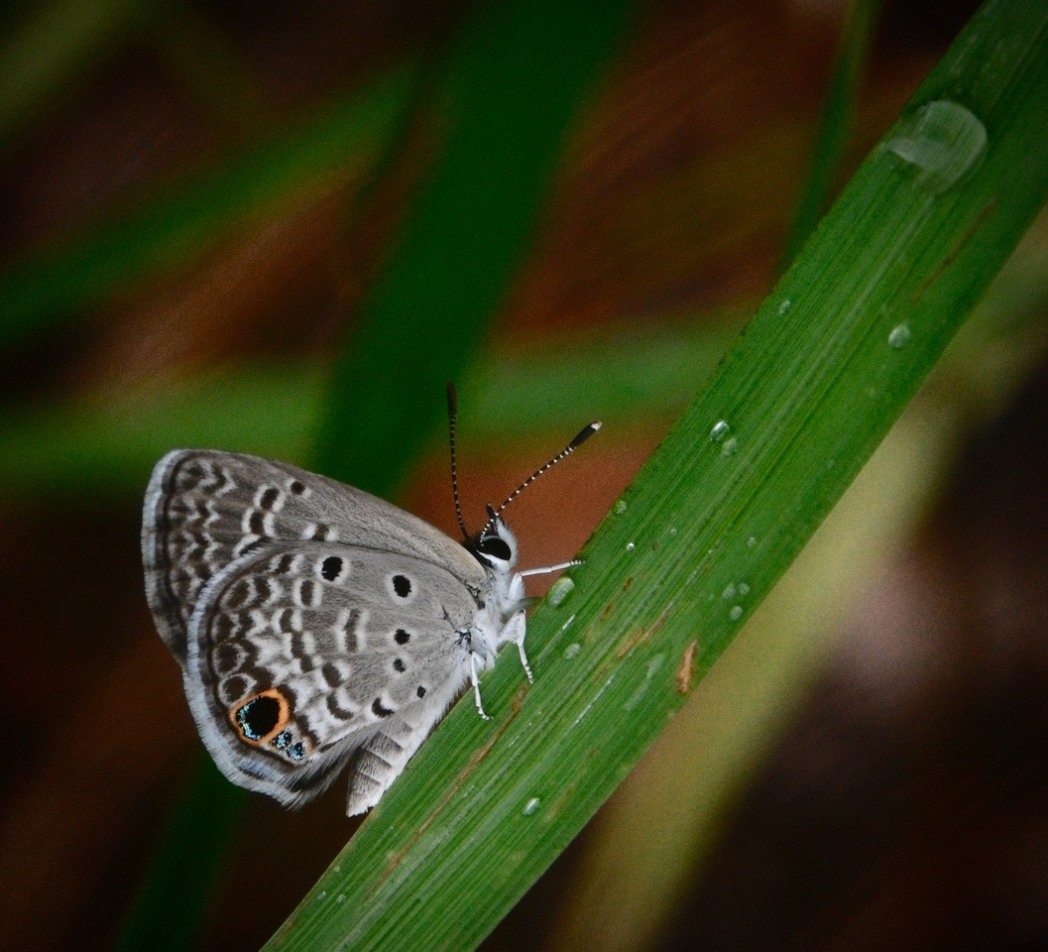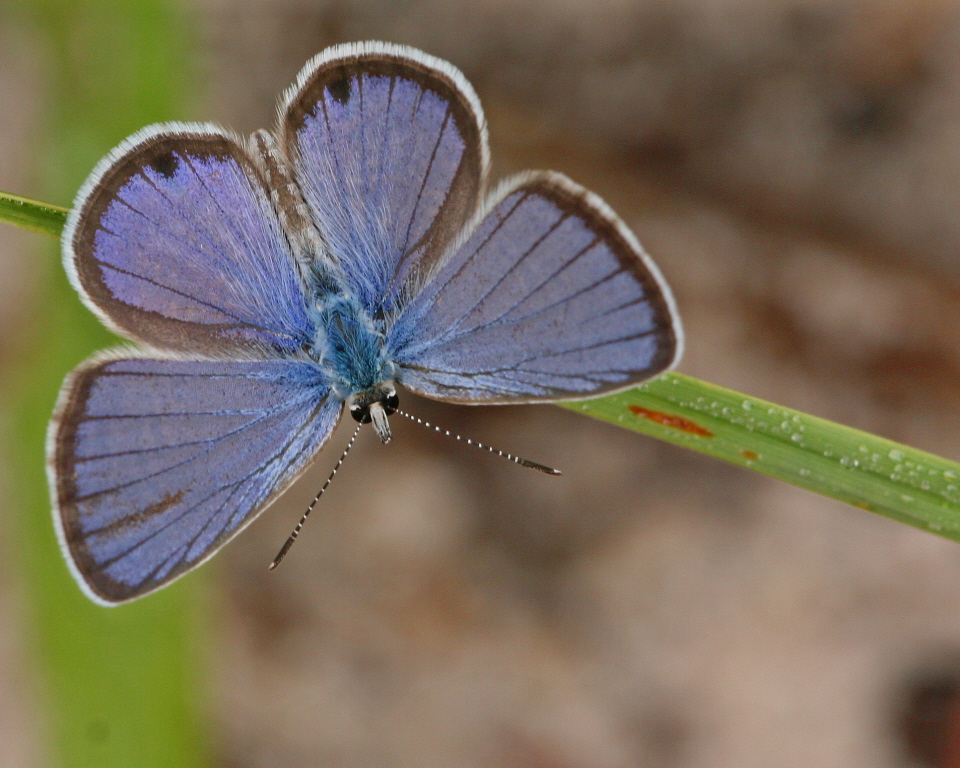Ceraunus blue
“Know your native pollinators” is a series of articles that will help you identify and appreciate Florida’s varied pollinators, including bees, wasps, butterflies, moths, beetles, flies, birds and bats. Pictured above: Ceraunus blue butterfly (Hemiargus ceraunus) by Mary Keim.
Being small, the Ceraunus blue might be easy to miss at first, but this lovely blue butterfly is worth another glance.
CLASSIFICATION
Class: Insecta
Order: Lepidoptera
Family: Lycaenidae
Subfamily: Polyommatinae
Genus species: Hemiargus ceraunus
FORAGING PREFERENCES
Plants in the Fabaceae (Legume) family are larval hosts of the Ceraunus blue. This covers a wide variety of Florida’s plants, including Partridge pea (Chamaecrista fasciculata), Sensitive pea, (Chamaecrista nictitans), Carolina indigo (Indigofera caroliniana), Coastal indigo (Indigofera miniata), Florida Keys indigo (Indigofera trita subsp. scabra), Sensitive brier (Mimosa quadrivalvis var. angustata), Hairy cowpea (Vigna luteola), Florida sensitive brier (Mimosa quadrivalvis var. floridana), Powderpuff (Mimosa strigillosa), Tropical puff (Neptunia pubescens), Thicket bean (Phaseolus polystachios), Avon Park rattlebox (Crotalaria avonensis), Low rattlebox (Crotalaria pumila), Pursh’s rattlebox (Crotalaria purshii) and Rabbitbells (Crotalaria rotundifolia).
Adult butterflies nectar on Blue porterweed (Stachytarpheta jamaicensis), Spanish needle (Bidens spp.), Southern frogfruit (Lippia stoechadifolia) and Powderpuff (Mimosa strigillosa).
IDENTIFICATION
A small butterfly, the Ceraunus blue’s wingspan is only 18–25 mm. Distinguishing characteristics marking this butterfly ventrally are two black spots along the lead margin and an orange-rimmed black eyespot at the outer margin of the wing. Other markings on the underside are dark bars with white bands and black spots rimmed with white on a gray background. Of course, the violet blue of the male’s dorsal side is what gives this butterfly its common name. Females are a dark brown with blue only at the base of their wings. Both have a small black spot at the hindwing margin on the upper side of the wing.
The Ceraunus blue is similar in appearance to another common butterfly, the Cassius blue. They can be distinguished from each other because the Ceraunus has only one large eyespot on the ventral hindwing, while the Cassius has two.

HABITAT
These butterflies are common in the southern United States. Their territory stretches from Mexico to the Caribbean, and south through Central America to South America.
Ceraunus blues thrive in sunny, open spaces. They can be found in weedy fields, disturbed sites, yards, utility corridors, scrubs, parks and along roadsides.
LIFE CYCLE
This butterfly can have three or more generations per year, and is in flight year-round in southern Florida. Males patrol for females during the warm hours of the day. When ready, the flat blue eggs are laid singly on the host plant, often on the bloom spikes. Larvae are light green to pinkish-red and resemble slugs. They are well camouflaged and often difficult to see. Pupae are yellow or green.
References:
- Butterfly Fun Facts.. “Ceraunus Blue Butterfly – Hemiargus ceraunus.” Nov. 2020.
- Daniels, Jaret. “Common name: Ceraunus blue”.UF/IFAS. Jan. 2015.
- Florida Museum. “Ceraunus blue, Hemiargus ceraunus.” University of Florida. Jun 1, 2020.
- Lotts, Kelly and Thomas Naberhaus, coordinators. 2017. Butterflies and Moths of North America. 2020.
- Sedore, David. “Ceraunus Blue Butterfly, Hemiargus ceraunus.” Wild South Florida. 2015.

